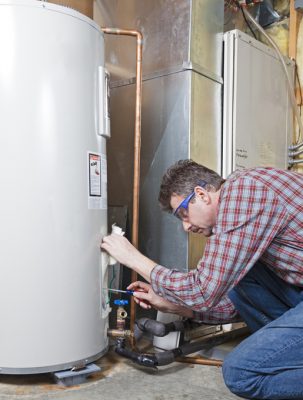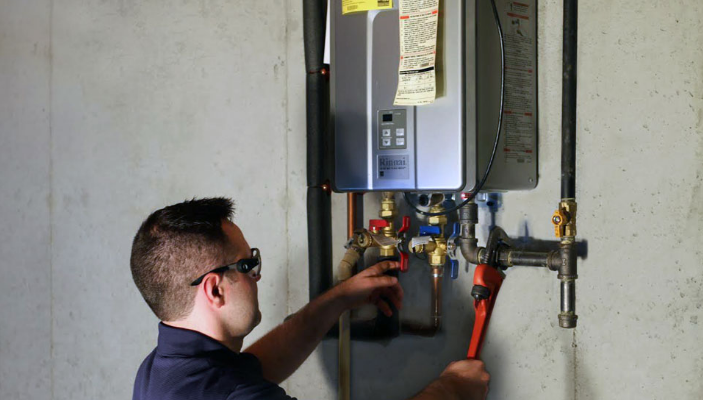Effective Methods to Maintain Your Home's Hot Water System Successfully
Effective Methods to Maintain Your Home's Hot Water System Successfully
Blog Article
Each person seems to have their private way of thinking in relation to How to Maintain Your Water Heater & Prolong its Life.

Warm water is vital for daily convenience, whether it's for a refreshing shower or cleaning dishes. To guarantee your warm water system runs effectively and lasts longer, regular maintenance is vital. This article supplies sensible tips and understandings on exactly how to keep your home's hot water system to prevent disruptions and pricey repair work.
Introduction
Preserving your home's warm water system might appear challenging, however with a couple of easy actions, you can ensure it operates efficiently for years to find. This overview covers everything from understanding your warm water system to do it yourself maintenance suggestions and recognizing when to call in professional assistance.
Relevance of Maintaining Your Hot Water System
Routine upkeep not only prolongs the life-span of your warm water system but likewise guarantees it runs efficiently. Overlooking upkeep can bring about decreased efficiency, greater power costs, and even premature failure of the system.
Indications Your Hot Water System Needs Maintenance
Understanding when your warm water system requires attention can avoid major problems. Keep an eye out for indicators such as inconsistent water temperature, strange noises from the heating unit, or rustic water.
Comprehending Your Hot Water System
Before diving into maintenance jobs, it's handy to recognize the basic components of your hot water system. Generally, this includes the water heater itself, pipelines, anode poles, and temperature level controls.
Monthly Maintenance Tasks
Regular regular monthly checks can assist catch small issues before they escalate.
Purging the Hot Water Heater
Purging your hot water heater eliminates sediment buildup, improving efficiency and prolonging its life.
Checking and Replacing Anode Rods
Anode poles protect against deterioration inside the storage tank. Checking and replacing them when worn out is crucial.
Inspecting and Adjusting Temperature Level Setups
Readjusting the temperature level setups guarantees ideal performance and safety.
Do It Yourself Tips for Upkeep
You can do a number of maintenance tasks yourself to keep your hot water system in leading problem.
Checking for Leakages
Frequently examine pipes and connections for leakages, as these can cause water damage and higher costs.
Examining Stress Alleviation Valves
Evaluating the pressure safety valve ensures it functions appropriately and prevents excessive stress accumulation.
Insulating Pipes
Protecting hot water pipelines minimizes heat loss and can conserve power.
When to Call a Specialist
While DIY maintenance is valuable, some problems require specialist competence.
Facility Problems Requiring Specialist Assistance
Examples consist of major leakages, electric problems, or if your hot water heater is consistently underperforming.
Regular Professional Upkeep Perks
Professional upkeep can include thorough assessments, tune-ups, and ensuring conformity with safety criteria.
Conclusion
Normal maintenance of your home's warm water system is important for effectiveness, longevity, and expense savings. By complying with these tips and understanding when to seek expert help, you can make sure a trusted supply of hot water without unanticipated disruptions.
Water Heater Maintenance: The Basics
Maintaining your water heater will ensure it operates efficiently and has a longer lifespan. Neglecting regular maintenance can lead to costly repairs and an even bigger chunk of your savings if you have to replace it sooner than necessary. But there’s good news: Most water heater maintenance tasks are relatively simple and easy for homeowners with basic DIY skills.
Flush the Water Heater
Over time, sediment and minerals can build up in the tank, reducing its efficiency and potentially causing damage. To flush the tank, turn off the power or gas supply, attach a hose to the drain valve near the bottom and open the valve to drain the water until it runs clear. Ideally, flush the tank annually.
Replace the Anode Rod
The anode rod is a sacrificial metal rod that helps prevent corrosion inside the tank. Inspect and replace it every three to five years or per the manufacturer's recommendation. To replace the anode rod, turn off the power or gas supply, drain a few gallons of water from the tank, unscrew the old rod and replace it with a new one. If the anode rod is significantly corroded or covered in calcium buildup, it's a sign the water heater may need to be replaced soon.
Tune-Up
A yearly tune-up can help identify potential issues and ensure your water heater operates at peak efficiency. This typically involves checking the thermostat, burner assembly (for gas heaters) and any other components specified by the manufacturer. During a tune-up, the technician may also clean the burner and adjust the pilot light (for gas heaters) or examine the heating elements (for electric heaters).
How to Maintain Your Water Heater
Insulate the tank. Insulating the tank can improve energy efficiency and reduce heat loss, saving you money on energy bills. You can purchase precut insulation blankets designed specifically for water heaters or use standard fiberglass insulation wrapped securely around the tank. Check the temperature. The recommended water temperature for most households is around 120 degrees Fahrenheit (49 degrees Celsius). Higher temperatures can increase energy costs and potentially cause scalding. Use a kitchen thermometer to check the temperature at the faucet nearest the water heater. Monitor water pressure. Excessive water pressure can strain the water heater and cause leaks or even tank failure. Install a pressure-reducing valve if necessary. The ideal water pressure range is between 60 and 70 PSI (pounds per square inch). Test the temperature and pressure (T&P) relief valve. The T&P relief valve is a safety feature that releases pressure if the tank gets too hot or the pressure builds up too high. Test it annually by lifting the lever and allowing a small amount of water to release. Replace the valve if it doesn't release water or reseal properly. Check for leaks. Regularly inspect the tank, pipes and fittings for leaks or corrosion. Deal with issues promptly to prevent further damage. Even a small leak can lead to significant water damage over time. Consider a tankless water heater. If your traditional tank-style water heater is nearing the end of its lifespan ( typically 10 years), consider replacing it with a tankless water heater. These units heat water on demand, reducing standby energy losses and potentially saving you money on your energy bills. Schedule professional maintenance. While homeowners can perform many water heater maintenance tasks, it's still a good idea to schedule professional maintenance every few years. A plumber or HVAC technician can thoroughly inspect the unit, identify potential issues and ensure it operates safely and efficiently. https://www.homeserve.com/en-us/blog/home-improvement/hot-water-heater-maintanence/

We were shown that report on How to Maintain Your Water Heater & Prolong its Life through an associate on another site. Loved our blog? Please share it. Help another person find it. I take joy in reading our article about How to Maintain Your Water Heater & Prolong its Life.
Explore Now Report this page